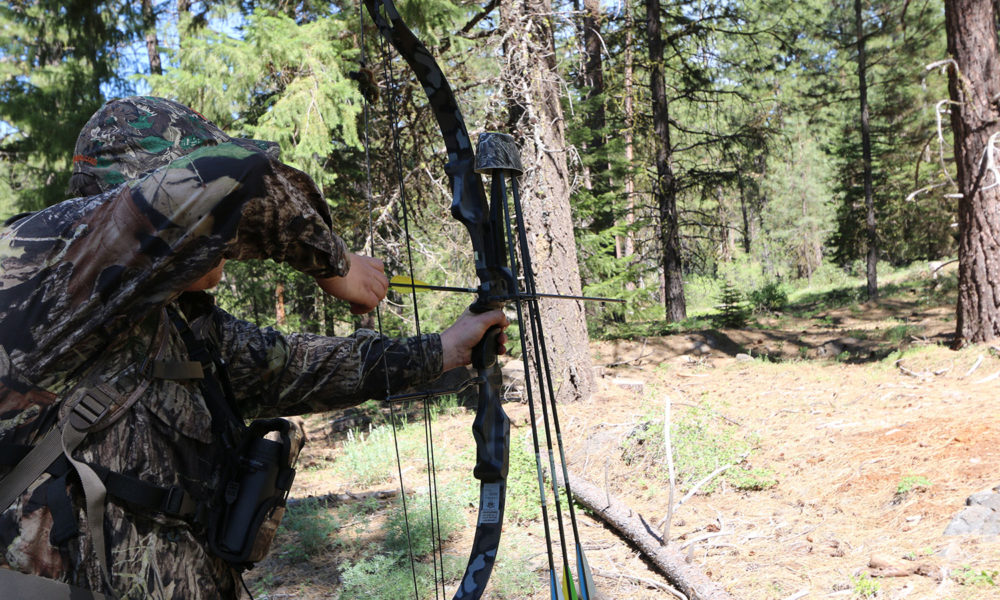At a time when COVID-19 cases are topping a million globally and thousands of Americans have died from the pandemic, the Trump Administration is planning a celebration—of sorts.
News broke last week that the Department of Interior (DOI) is planning to open an unprecedented number of wildlife refuges to hunting and fishing. The proposed changes, if finalized, would open over 2.3 million acres of federal land across 97 national wildlife refuges and 9 fish hatcheries. The administration had already expanded access to over 70 wildlife refuges for hunting and fishing in 2019.
The DOI news release referred to the proposal as a means to celebrate the successful efforts by the administration to eliminate the threat of COVID-19. “Once the Trump Administration’s effort to eliminate the threat of COVID-19 has been successful, there will be no better way to celebrate than to get out and enjoy increased access for hunting and fishing on our public lands,” read a section of the news release.
So, I suppose the administration is already claiming success even though New York state alone has more COVID-19 cases than any other country in the world. This shows that the administration was prepared for this pandemic…right? This record number is certainly tied to the fact that, as my colleagues have documented, the scientific evidence and advice on the COVID-19 epidemic has been frequently ignored in the Administration’s response.
As others have pointed out, this celebratory language falls tone deaf on a country in fear of catching a deadly disease or for those who are currently experiencing grief in seeing loved ones suffer or, worse, die. The federal government was not prepared to provide the equipment healthcare workers need to protect themselves as they put their lives on the line to help others in-need. Are these folks feeling the administration’s success?
As of Monday, April 13, there were a reported 21,984 deaths attributed to the virus in the US according to the COVID-19 project. Over 1,000 deaths are occurring now every day in the US. It is expected that at least 60,000 people will die in the US, more than any other industrialized country has experienced with the pandemic to-date. Is this what success looks like? And is that something worthy of a celebration, let alone a celebration involving more death of animals in refuges?
In addition to the lack of empathy, there are other issues with the administration’s plan to open refuges to hunting and fishing.
No monitoring or data collection
A major problem with the previous Trump Administration (2019) expansion of hunting/fishing in wildlife refuges was that there was a lack of a monitoring system or data collection planned by federal or state officials. Of course, the new proposed changes for the 2020/2021 hunting season do not have a monitoring system in place either. Instead, the draft of the proposed rule will rely on hunters to report their harvest, a task that more than 60% of hunters fail to do in some states. A study found that compliance of harvest reports for white-tailed deer has declined in the past 30 years in Pennsylvania.
With no monitoring system in place and limited data collection, it will be challenging to fully understand the effects of an unprecedented change on game and other wildlife in these refuges. Future decisions regarding conservation efforts on wildlife refuges will be based on inaccurate and incomplete data. This will likely place the health of protected wildlife at risk.
Endangered species unprotected
A lack of a monitoring system may also place endangered species at risk. Increased hunting of waterfowl and other bird species may result in the incidental take of endangered bird species, for example. It also doesn’t help that the Trump administration has proposed to allow the incidental death of migratory bird species, despite research recently showing a 30% decline in bird species.
Additionally, with such a dramatic increase in expected hunting, and no independent monitoring in place, the “take” of endangered species beyond safe limits seems almost inevitable. Recall that “take” in the context of endangered species includes disturbance, not just actual killing. The disturbance of critical habitat can hasten extinction for some endangered species.
Essentially, both the 2019 and 2020 rules that have, or will, expand access to hunting/fishing in wildlife refuges gut federal oversight of these activities. “While the Trump policy retains federal ownership, it basically eviscerates federal management,” said Jeff Ruch of Public Employees for Environmental Responsibility. “The states end up managing federal land with federal dollars but following state laws. That’s a sea change from federal management for conservation and biodiversity rather than promoting hunting.”
Hunting can lead to zoonotic spillover
Most infectious diseases that affect humans come from our contact, direct or indirect, with other animals. This process by which a pathogen transfers from a vertebrate animal to a human is called zoonotic spillover. Diseases that likely originated from contact with wild animals include the West Nile virus (bird species), tularemia (contact with dead hares or rodents), and rabies (various rabid animals). The novel coronavirus that causes COVID-19 is presumed to have been transferred from a species of bat.
According to Dennis Carroll, an expert on zoonotic spillover, pathogens are spilling over from wildlife to humans at an increasing rate. “We’re looking at an elevation of spillover events two to three times more than what we saw 40 years earlier,” he said in an interview with Nautilus. Carroll says that there are diseases out there hiding and waiting to emerge. It is why he formed the program PREDICT at the United States Agency for International Development to research where such diseases lie in wait. A new study was released this week based on prior work from the PREDICT program identifying six new coronaviruses in bats in Myanmar—work that could help predict future emerging diseases like the current coronavirus. The Trump administration defunded this program in 2019.
A new study was published in the Proceedings of the Royal Society B suggests hunters exercise caution as exploitation of wildlife (such as hunting) can increase the likelihood of disease transmission.
All of this is to say, just be careful if you’ll be interacting with wildlife.
Human-animal interactions can be deadly
“Viral pandemics remind us how closely human health is connected to the health of wildlife and the environment,” said Marc Valitutto, lead author of the PREDICT study. “Worldwide, humans are interacting with wildlife with increasing frequency, so the more we understand about these viruses in animals—what allows them to mutate and how they spread to other species—the better we can reduce their pandemic potential.” Science certainly worth informing our decisions and keeping us healthy and safe, I’d say—especially as land-use change, over exploitation of species, and climate change continue to drive up the frequency of human-animal interactions.
But the current administration doesn’t appreciate the worth of this research, or else they wouldn’t have defunded it, right? They also wouldn’t likely have boasted about opening an unprecedented amount of wildlife refuges for hunting, further exploiting potentially threatened species, resulting in increased viral loads. And maybe they would’ve created a monitoring system for this unprecedented decision? It seems at best premature and more misguided to celebrate the efforts of this administration to end COVID-19. And celebrating with more death adds to the irony. Unfortunately, that seems exactly in line with the way this Administration treats the science.

